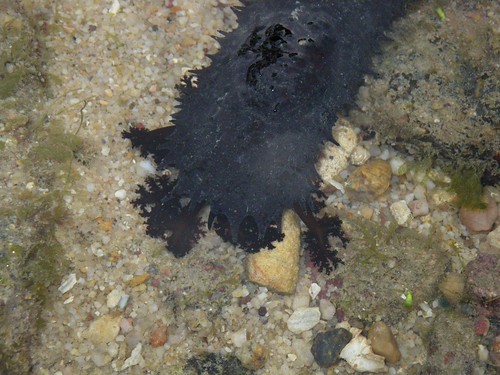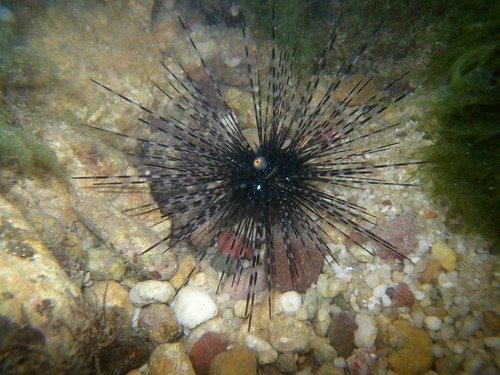
The most common echinoderm there was probably this black sea cucumber (Holothuria leucospilota), which was all over place, especially under rocks. This one was out in a tidal pool, spreading out their branching tentacles to feed on detritus.

Another common resident in this rocky area was this branching anemone, Phymanthus sp.

We also found two lovely Pseudobiceros uniarborensis flatworms. They move and swim by undulating the sides of their body as shown here.

What I initially thought was a mud crab turned out to be a spotted belly crab (Ozius guttatus) because of its polka dotted underside. Just like its cousin, it is also armed with powerful crushing pincers to feed on shelled molluscs.

RY found this small Black Spined Sea Urchin (Diadema setosum). The orange 'eye' on the centre is actually the anal hole for waste disposal!

We also found several Giant Top Shells (Trochus niloticus) hiding between the rocks. These huge snails were collected for food and when polished, their beautiful shells are used for ornamental purposes and for making buttons.

Diamond Wrasse (Halichoeres dussumieri) has a thick lip which hides a extendable jaw that can jut outwards for feeding purposes.

Here is a pretty calcareous red algae (Tricleocarpa sp.), among the many species of seaweeds that can be found in this area.

I saw this pair of intricately designed oysters, Alectryonella plicatula. According to our molluscs expert SK, this is one species that can be eaten.

No comments:
Post a Comment